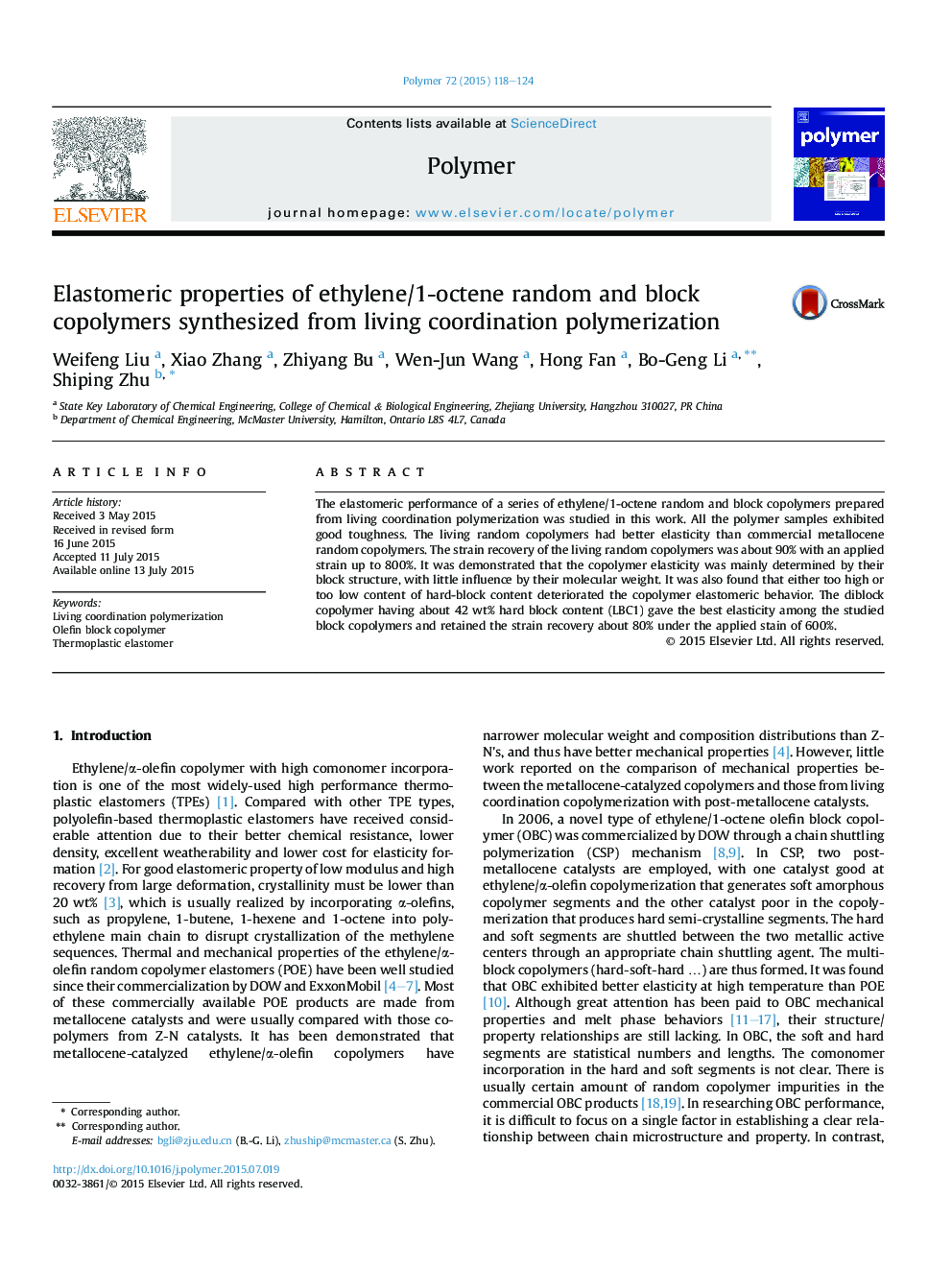| Article ID | Journal | Published Year | Pages | File Type |
|---|---|---|---|---|
| 5179816 | Polymer | 2015 | 7 Pages |
â¢LRC had better elasticity than MRC.â¢The strain recovery of LRC kept 90% with an applied strain up to 800%.â¢LBC1 retained the strain recovery about 80% under the applied stain of 600%.â¢The elasticity of block copolymers was mainly determined by their block structure.
The elastomeric performance of a series of ethylene/1-octene random and block copolymers prepared from living coordination polymerization was studied in this work. All the polymer samples exhibited good toughness. The living random copolymers had better elasticity than commercial metallocene random copolymers. The strain recovery of the living random copolymers was about 90% with an applied strain up to 800%. It was demonstrated that the copolymer elasticity was mainly determined by their block structure, with little influence by their molecular weight. It was also found that either too high or too low content of hard-block content deteriorated the copolymer elastomeric behavior. The diblock copolymer having about 42Â wt% hard block content (LBC1) gave the best elasticity among the studied block copolymers and retained the strain recovery about 80% under the applied stain of 600%.
Graphical abstractDownload high-res image (257KB)Download full-size image
